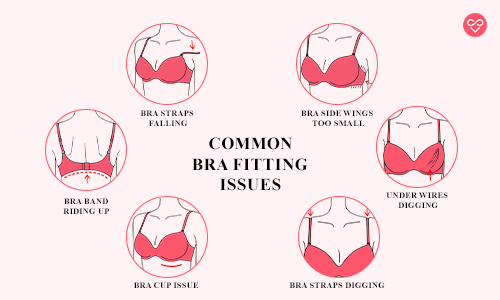Most women have spent years tolerating bras that dig, gape, slip, or squeeze.
Between inconsistent sizing, confusing styles and bodies that change due to hormones, pregnancy and ageing, it's no surprise that so many of us struggle.
But this blog isn't just another checklist. It’s your complete guide to identifying, understanding and fixing the most common bra fitting issues—backed by real solutions and a touch of self-love.
Why the Right Fit Matters More Than You Think?
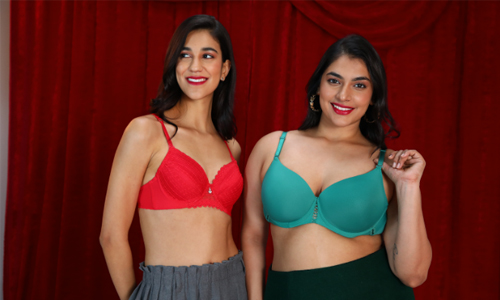
Not too long ago, most women had little knowledge about bra sizing. Terms like cup size, band size, or padding level weren’t part of the conversation. We simply walked into a store, picked a colour or design we liked and hoped it worked.
But today? Things are changing.
Today’s lingerie stores are doing more than just selling bras. With thoughtfully designed, solution-focused bra collections for every body type and lifestyle, they make finding your perfect fit easier than ever.
A Well-Fitting Bra Can
- Support your breast tissue and improve posture
- Prevent neck, shoulder and back pain
- Make your clothes look and feel better
- Boost your comfort and confidence all day long
An ill-fitting bra? It does the opposite—digs in, sags, hurts and frustrates.
Most Common Bra Fitting Issues and Their Solutions
Here’s the good news: most bra fitting issues are common and fixable.
1. Visible Bra Lines (VBL)
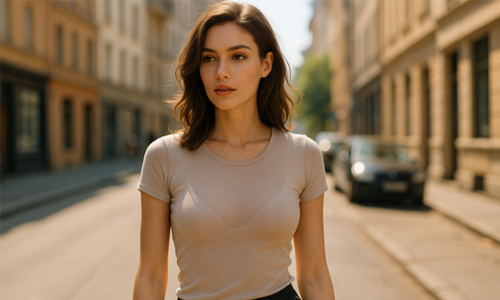
It’s an everyday frustration. But is it always the bra’s fault? Not entirely. Let’s dive into what really causes these unwanted lines and how to beat the T-shirt test.
Why Does It Happen?

- Seams and Stitching – Textured seams or lace detailing can press through light or clingy fabrics.
- Thick or Uneven Padding – Uneven cups or heavy padding often create ridges.
- Bold Colours Under Light Clothes – A red bra under a white top, you get me right?
- Improper Size – A bra that’s too tight or too loose shifts, wrinkles and shows through your outfit.
- Worn-Out Bras – Old bras with distorted cups or stretched-out bands become more visible under clothes.
👙Test your bra under a tight T-shirt in natural lighting. If it passes the T-shirt test, you’re good to go!
Quick Fix Solutions
But don’t worry, we’ve got bra outline solutions that actually work, so you can wear what you love, without the lumps and bumps.
- Go Seamless – Choose seamless bras with smooth cups and no external stitching. These disappear under most tops.
- Pick T-Shirt Bras that are designed specifically for smoothness and invisible support.
- Choose Moulded Cups, which offer structure and contour without bulk, perfect for hiding lines.
- Opt for Microfibre or Nylon – These fabrics lay flat against the skin and reduce textural interference with your clothing.
- Try Skin-Tone Shades – Matching your bra colour to your skin tone creates a near-invisible base under light fabrics.
2. Bra Straps Keep Falling Off
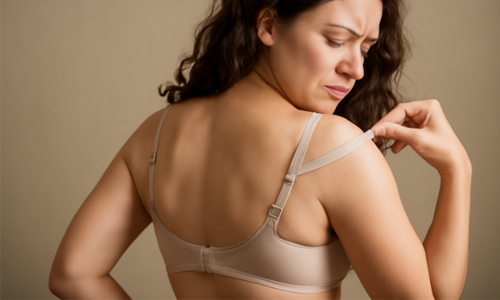
This issue is widely recognised as a common problem among women. But is it just the straps? Not at all. Keep reading to find out what other factors might be causing the problem.
Why Does It Happen?
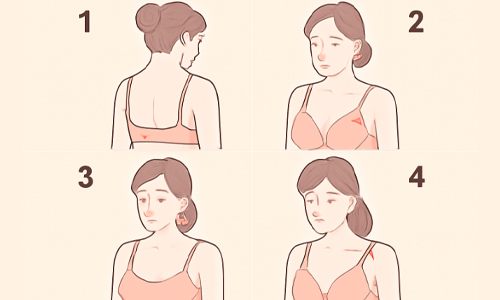
- Your band is too loose and not anchoring the straps properly.
- Your cups are too big, causing gaping and slippage.
- The straps are too wide-set for your shoulder shape.
- You’re wearing the wrong style for narrow or sloping shoulders.
👙Tightening straps isn't the solution—it's just a temporary band-aid.
Quick Fix Solutions
Before tossing your bra in frustration, try this:
- Downsize the band – To create tension that holds the straps up.
- Go for a smaller cup size if there’s too much space between your breasts and the cup.
- Look for bras with close-set or convertible straps to reduce slipping.
- Try a racerback or T-back style for narrow shoulders.
- Check if the straps are adjustable, which allows you to move them inward.
3. Nipple Visibility Through Clothes
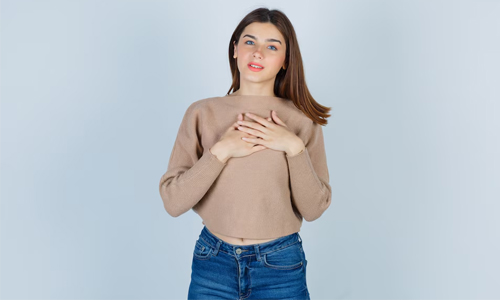
This is one of the most embarrassing bra problems most women face. But before blaming the fabric or the outfit, let’s look at the real issue: nipple visibility can often be traced back to your bra choice.
Why Does It Happen?
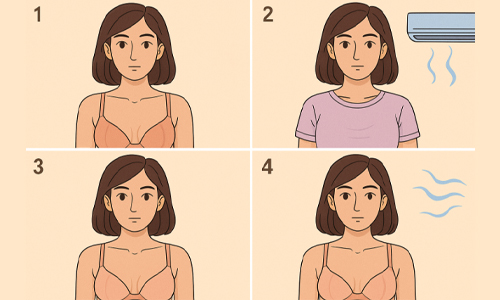
- You're wearing a non-padded bra that doesn't offer enough coverage.
- The fabric is too thin or too sheer to conceal nipples.
- Your bra lacks a moulded or lined cup to create a smooth shape.
- Weather changes, especially cold climates or air conditioning, can cause nipples to protrude.
👙Throwing on layers isn’t a real fix—it just hides the problem, not solves it.
Quick Fix Solutions
We’ve got solutions to stop nipple show-through, so you can feel confident and comfortable without any distractions.
- Switch to a padded or moulded bra – These bras provide a smooth finish and conceal nipples effectively.
- Opt for T-shirt bras – Their seamless design works brilliantly under fitted clothing.
- Try bras with thicker fabric or double lining – Extra layers equal better coverage.
- Consider nipple covers or silicone petals for outfits where a bra isn’t an option.
- Look for high-quality cups that maintain their shape after washing.
4. Underwire Digging In
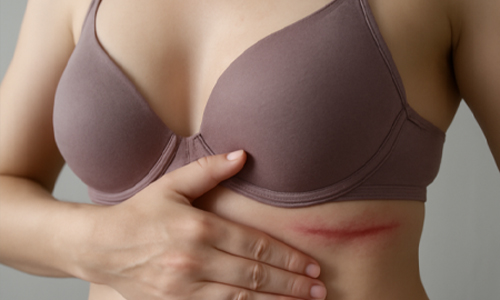
Is the underwire digging into your ribs or breasts, leaving painful red marks by the end of the day? Ouch! Let's dive into the reasons and how to fix it.
Why Does It Happen?
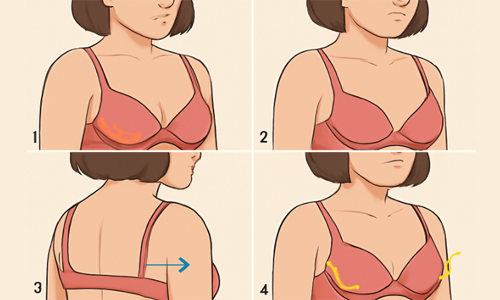
- The cup is too small, causing the wire to press against your skin.
- The wire shape doesn't match your breast root or natural curve.
- The band is too loose, shifting the weight onto the underwire.
- You’re wearing a bra that’s too old, and the wires have become warped or bent out of shape.
👙A properly fitting bra should never cause pain, and underwires should sit flat against your rib cage without digging in.
Quick Fix Solutions
Before you give up on that favourite bra, try these fixes:
- Go up a cup size, which will allow the wire to sit comfortably under your breast tissue.
- Choose a bra with a more flexible underwire to accommodate different breast shapes.
- Tightening the band will take the pressure off the wire, making the fit more comfortable.
- Try bras with soft or flexible wire options or wire-free support for comfort without sacrificing shape.
- Worn-out wires will lose their structure, so it’s time to retire those old bras after a certain point.
5. Side Spillage in Bras (Underarm Bulge)
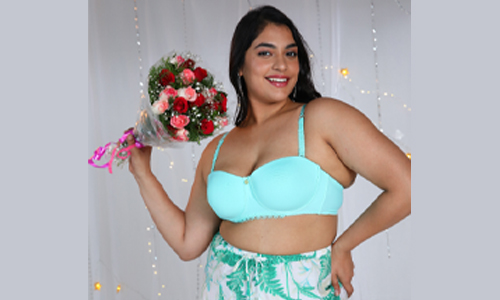
Tired of feeling like your bra is suffocating your sides? That annoying underarm bulge, also known as side spillage, can leave you feeling self-conscious and uncomfortable. Let’s break down why this happens and how to fix it.
Why Does It Happen?
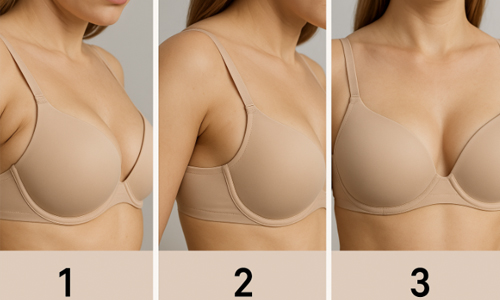
- Your cups are too small, leaving breast tissue spilling out of the sides.
- The bra has low side wings that don’t provide enough containment.
- Your bra’s design lacks side support or compression.
👙 Side spillage isn’t a sign that you need to hide it—it just means your bra isn’t quite right.
Quick Fix Solutions
Before you reach for a new bra (or hide under a loose top), try these side spillage solutions:
- Size up in the cup to make a world of difference in coverage.
- Choose bras with higher side panels to give better containment and prevent spillage.
- Look for bras with side boning or compression panels to provide support and shape, especially for fuller busts.
- Try styles designed with wider wings for more coverage.
6. Gaping or Wrinkling in Bra Cups
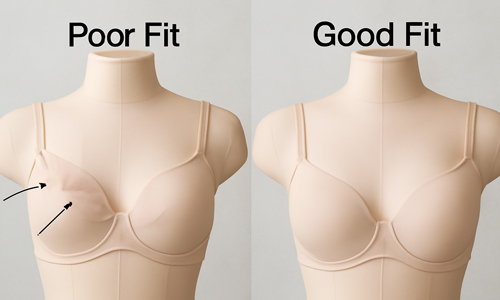
Tired of noticing that awkward gap between your breast and the cup? Or maybe your bra cups just wrinkle up like an old shirt? Though it’s frustrating, it’s often easier to fix than you think!
Why Does It Happen?
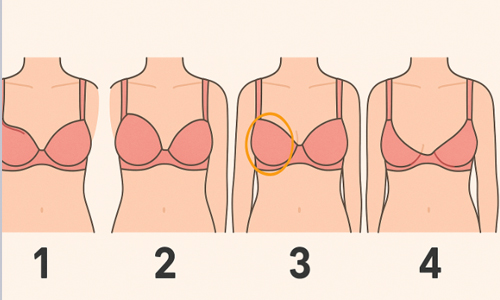
- Your cup is too big, leaving extra space that your breast tissue doesn’t fill.
- Your breast shape may not match the cup shape, causing it to wrinkle or gap.
- You might have uneven breasts (which is completely normal!), and one side doesn’t fill the cup as well as the other.
- The improper bra’s construction fails to provide enough support or structure for your shape.
👙 Gaping and wrinkling are signals that your cups aren’t doing their job. Let’s make them work for you!
Quick Fix Solutions
Before giving up on that bra forever, here’s what you can do:
- Size down the cup to fill up more naturallyTry moulded cups or padded bras, which can give structure and help fill out the space.
- Consider bras with flexible cups to adjust to your shape more comfortably.
- For asymmetry, use removable padding or adjustable inserts to balance out the gap.
- Check the wire placement – The underwire should sit directly at the base of your breast tissue.
7. Spillage Over the Top (Quad-Boob)
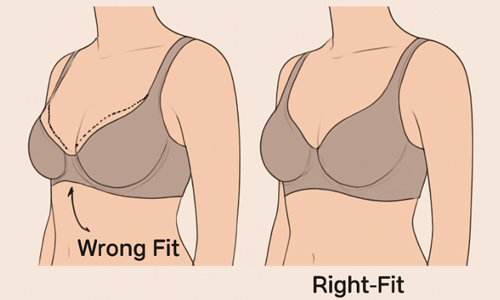
Nothing is more uncomfortable than that annoying "quad-boob" effect—when your breasts spill over the top of the bra cups. But this isn't just a fashion faux pas; it's a sign that your bra isn't offering you the support you need.
Why Does It Happen?
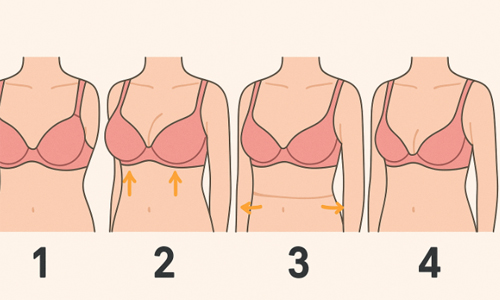
- The Cup is Too Small – When your cups are too small for your breast size, the tissue spills over the edges.
- You're Wearing a Push-Up Bra – Push-up bras add extra padding, which can push the tissue upward and outward, causing overflow.
- Your Band Size Is Too Big – If your band is too loose, it fails to provide enough support, causing the cup to collapse and the tissue to spill over.
- Incorrect Cup Style – Certain cup styles, like plunge or balconette, may not fully contain your breasts, especially if you have fuller breasts or wide-set breasts.
👙 Your breast tissue deserves support, and your bra should be your ally in feeling comfortable and confident.
Quick Fix Solutions
Before you decide to give up on bras altogether, try these adjustments:
- Go Up a Cup Size – It can make a world of difference in preventing spillage. Ensure your breasts are fully contained, with no excess tissue hanging over the edges.
- Consider a Full-Coverage or 3/4th Coverage Bra – These styles provide more space and better coverage, especially for fuller busts, ensuring the breast tissue stays inside the cup.
- Choose a More Structured Bra – Opt for bras with thicker, firmer cups that support the breast from the base up, keeping everything in place.
- Check the Band Size – If you notice spillage, the problem might be a loose band. Tighten the band to create more lift and support, and make sure the band is level all around your body.
- Avoid Low-Cut Styles – if you experience quad-boob.
8. Bra Band Rides Up the Back
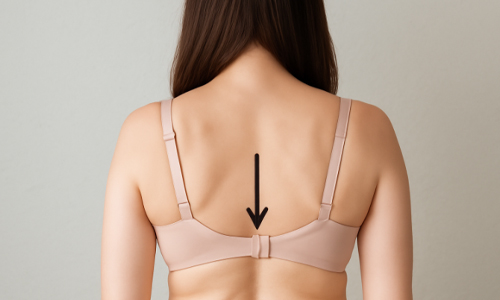
Does your bra band feel like it's slowly rolling up throughout the day? It’s a sign that your bra is doing the opposite of what it's supposed to. Instead of providing support, it’s just causing you discomfort.
Why Does It Happen?
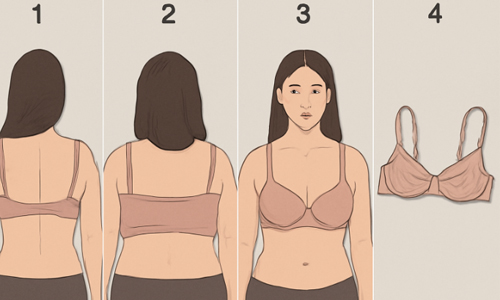
- Your band is too loose, causing it to slide up rather than stay in place.
- You're wearing a band that's too wide, making it harder to sit flat.
- The cups may be too small, forcing the band to take on too much weight.
- The bra is simply worn out or not built for long-term support.
👙 Remember: A well-fitting band provides 80% of your bra’s support, so don’t neglect it!
Quick Fix Solutions
Before you give up on your bra, consider these fixes:
- Tighten the band to keep the fit in place.
- Go down a band size to prevent slippage.
- Try a full-coverage or high-back style for a more stable structure and to prevent the band from rising.
- Avoid stretchy bands – They lose their shape over time, leading to shifting.
- Check the underwires – Ensure they sit properly under the breast tissue to prevent unnecessary movement.
9. Centre Gore Doesn’t Lay Flat
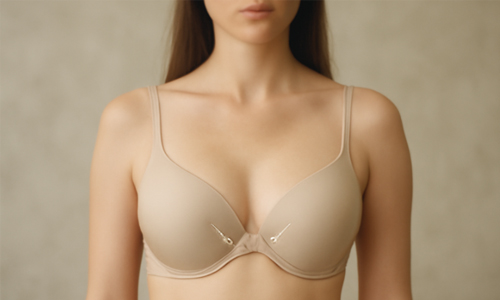
Sometimes, your bra’s centre gore sticks out or does not lie flat against your chest. This is often an overlooked issue that can cause discomfort and impact your overall bra fit.
Why Does It Happen?
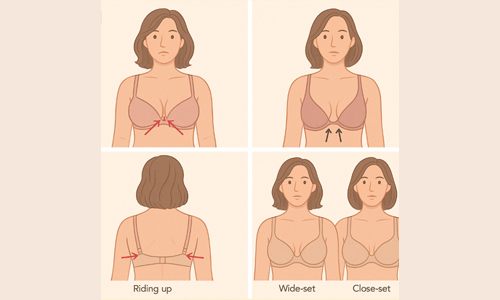
- Your cup size is too small, causing the gore to lift away from your chest.
- The bra style doesn’t match your breast shape or spacing, leading to an improper fit.
- Your band size might be too large, making the bra ride up and pushing the gore out.
- Your breasts may have wider or closer spacing, affecting the fit of certain styles.
👙 A properly fitting centre gore should lie flat and comfortably between your breasts without pushing out or digging in.
Quick Fix Solutions
Before ditching your bra, try these adjustments to make it work:
- Size up the cups to allow the gore to sit flat.
- Opt for a style with a lower or wider gore if you have a wider breast separation. They will provide more comfort and a better fit.
- Check your band size – A band that’s too loose can pull the front of the bra up, causing the centre gore to lift.
- Choose a plunge bra or demi cup – These styles have lower, more flexible goring that can adjust better to your chest’s shape and spacing.
- Try adjustable gore designs to slightly adjust the width of the gore for a better fit.
10. Bra Straps Dig Into Shoulders
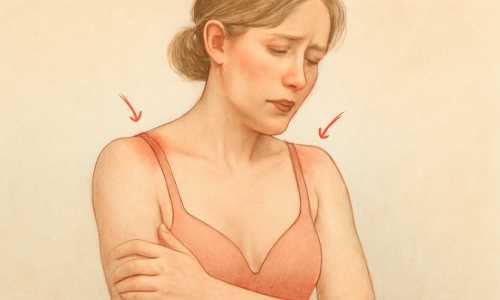
Are your bra straps leaving painful indents on your shoulders by the end of the day? Don’t worry, it’s not your body’s fault—it’s usually the bra’s design. Let’s uncover the reasons behind those uncomfortable marks and find out the things to do when your bra strap is tight.
Why Does It Happen?
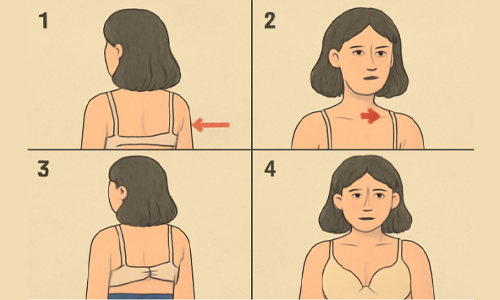
- The band is too loose: When the band isn’t snug enough, the straps take on more weight than they should, leading to painful digging.
- The straps are too thin: Thin straps can’t distribute the weight of your bust properly, which means they put extra pressure on your shoulders.
- The band isn’t providing enough support: If the band is riding up or too loose, the straps will end up doing all the work, resulting in discomfort.
- You’re wearing the wrong bra style for your body: Certain designs may put more pressure on your shoulders, especially if they don’t fit your shape properly.
👙Bra bands that fit you properly can support you throughout the day. Don’t settle for a quick strap adjustment—address the root cause for long-term relief!
Quick Fix Solutions
Before you resign yourself to uncomfortable straps, try these fixes to relieve the pressure on your shoulders:
- Tighten the band, not the straps – If your band is too loose, it’s doing little to support you. Tightening the straps might seem like an easy fix, but it’s just a temporary solution. The real support needs to come from the band.
- Go for bras with wider straps, they help distribute the weight of your bust more evenly across your shoulders, reducing the chance of digging.
- Look for bras with better band support, bras that feature power mesh bands or extra-wide bands to take the strain off the straps.
- Try padded bras or cushioned straps to alleviate the pressure on your shoulders.
- Consider bras with a U-back or wider back design for more even support and to reduce the pressure on your straps.
11. Bra Feels Great in the Morning, But Awful by Noon
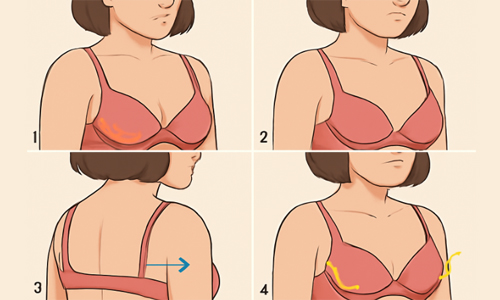
Isn’t it the worst when your bra starts off feeling comfy, but by lunchtime, you’re counting the minutes until you can rip it off? Here’s the truth: it’s the bra's quality and structure.
Why Does It Happen?
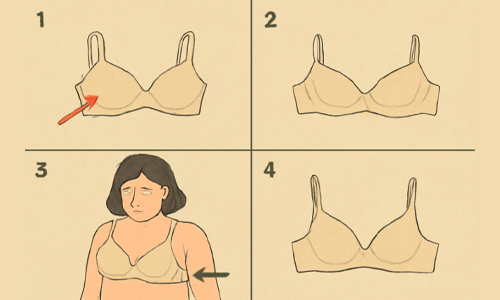
- Your bra is worn out – Fabric, elastic and underwires lose their integrity over time.
- The structure isn’t supporting you properly – Older bras can become less supportive, even if they still look good on the outside.
- Your body has changed – Weight fluctuations, hormonal changes, or pregnancy might affect the way the bra fits over time.
- Poor material choice – Some bras are made with cheap materials that break down faster under daily wear.
👙Comfort isn’t just about the size—it’s also about choosing the right materials and replacing worn-out bras to maintain support throughout the day.
Quick Fix Solutions
Before you start dreading the rest of your day, here’s how to get back to comfort:
- Replace bras regularly – Bras wear out faster than you think. Make it a habit to replace them every 6–12 months if worn frequently.
- Invest in better materials – Look for bras with power mesh bands, reinforced seams, or supportive linings that offer lasting structure and support.
- Opt for high-quality brands – Bras made from durable fabrics (cotton blends, high-grade spandex) will retain their shape longer.
- Consider a professional fitting – If your body has changed, a fitting can help you identify what your new size needs in terms of fabric and support.
Bonus: Fit Solutions for Specific Needs
Finding the right bra isn’t one-size-fits-all. Every woman’s body is unique, and as our bodies go through different stages of life, our bra needs change, too. Here’s a more in-depth look at bra fit solutions for three key groups: post-pregnancy or nursing moms, plus-size/full bust women and petite frames.
1. Post-Pregnancy or Nursing Moms
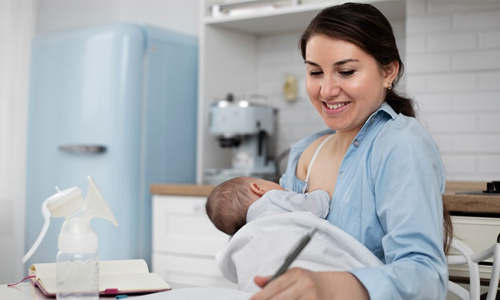
The journey through pregnancy and breastfeeding is beautiful, but it can bring out a lot of changes in the breasts, like fluctuating breast sizes, the need for easy access and breast sagging. So, how do you get the perfect fit during this time? Here are some tips:
- Look for wireless nursing bras with stretch cups, clips or pull-down panels that can accommodate changes in your breast size and easily nurse without having to remove your bra.
- Choose bras with multiple band settings so you can adjust them as your body shifts.
- Go for soft, breathable fabrics like cotton or bamboo blends to keep you cool and prevent irritation.
Pro Tip: When you start weaning, your breast size may fluctuate, so don't be afraid to explore new bras designed specifically for sagging, offering the support and lift you need.
2. Plus-Size or Full Bust
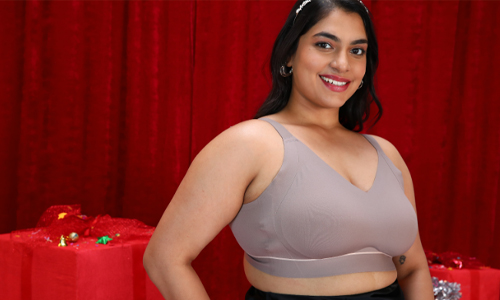
If you're a plus-size woman, the right bra can transform the way your clothes fit and how comfortable you feel. Here are a few full-busted solutions that actually work, so you can wear what you love without any digging, spilling, or discomfort.
- A bra band with a larger width helps distribute the weight of your bust evenly, reduces the pressure on your shoulders and back, takes the pressure off the straps and prevents uncomfortable digging.
- Bras that have firm elastic in the band and cup provide the necessary lift and support, ensuring that your bra stays in place and doesn’t roll up or shift throughout the day.
- Multi-part cups (those with seaming or extra panels) help lift the bust and prevent “spillover” at the sides or top. A 3/4th cup is especially beneficial for providing separation, reducing the appearance of “uniboob” and offering a more defined silhouette.
- Bras with side support panels or a U-back design prevent that uncomfortable bulge and sliding straps or digging in.
Pro Tip: Consider looking for bras that have underwire support if you’re comfortable with it—this can give you the structured support your bust needs.
3. Petite Frames
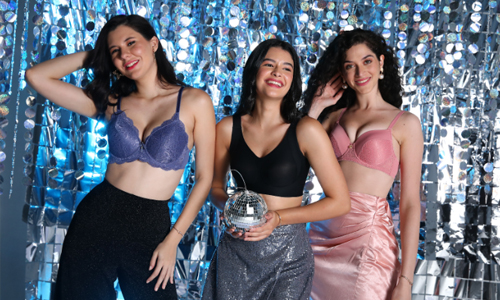
If you have a smaller frame, finding the right bra that fits your proportions can be tricky, but it’s absolutely possible. By focusing on cut, shape and structure, you can find a bra that gives you the shape and support you need.
- Plunge bras with shallow cups are designed to provide natural shaping and support without adding bulk. Because the cups aren’t deep, they fit snugly against the breast tissue, providing lift and shape without gaping or causing discomfort.
- Bras that feature close-set straps don’t dig into your shoulders or slip off. These styles are often designed to contour your frame better, giving you a more secure and comfortable fit.
- Bra designs that have light padding or moulded cups for shape provide some lift while being incredibly soft.
- Bralettes with adjustable straps and a bit of stretch will ensure a more customised, comfortable fit.
Pro Tip: When shopping, don’t be afraid to experiment with smaller band sizes and larger cup sizes (sister sizing) to find the best fit. It’s all about trial and error until you find what feels right for your body.
A Few More Tips for Every Body Type:
Get Re-Fitted Regularly: As your body changes, so should your bra size. Getting refitted every 6 months (or when you notice discomfort) ensures that you’re always wearing the right size.
Look for Supportive Fabrics: No matter your body type, look for bras made with quality fabrics like silk, microfibre, or high-stretch cotton. These fabrics provide the right balance of comfort and support.
Final Thoughts: You Deserve More Than “Good Enough”
Whether you’re curvy, petite, nursing, ageing, or just figuring it all out, it’s time to stop blaming yourself for these bra fitting issues. Bodies change, sizing varies and let’s face it. You are unique, and your bra should be too.
Make your next bra experience the best one yet. Because you deserve it!
FAQs
Size & Fit Issues
- How do I know the correct bra size for me?
To find the correct bra size, measure your underbust (around the ribcage) and add 4 or 5 inches to it, depending on whether it's an even or odd number, for the band size. For the bust size, measure around the fullest part of your bust. By subtracting the band measurement from the bust measurement, you’ll get your cup size (1 inch = A, 2 inches = B, 3 inches = C, etc.).
Example:
Underbust measurement: 30 inches → add 4 inches → 34 band size.
Bust measurement: 37 inches → subtract 34 inches (band size) → 3-inch difference = C cup.
Your bra size would be 34C!
- How do I know my sports bra size compared to regular bras?
Sports bras often come in S, M and L sizes, so refer to the brand’s size guide. A good rule is:
- 32B/32C → Small
- 34C/34D → Medium
- 36C/36D → Large
Always check the size chart and consider going a size up if you prefer a looser fit for low-impact activities, or size down for a snug fit during high-impact activities.
3. What is a sister size in bras?
Sister sizes are the alternative sizes with the same cup volume. For example, if you wear a 34D and it feels tight in the band, you can try a 36C. The cup volume stays the same, but the band size increases.
- The cup size doesn’t fit well in S/M/L seamless bras. What should I do?
Seamless bras stretch but may not suit all cup volumes. If your cup overflows or feels loose, try the next size (e.g., from M to L), or consider switching to bras that come with specific band and cup sizes for more accuracy.
Support & Shape Issues
- What type of bra is best for sagging, heavy breasts?
Women with heavy breasts should look for bras with full coverage, wide straps and firm underbands for full support and even weight distribution. Minimiser bras and no-sag bra styles are great for lifting and reducing the appearance of sagging.
- Can I use padded bras if I have a heavy bust?
Yes, but look for padded bras with firm structure, wide wings and reinforced straps. Avoid heavily padded styles and opt for light or moulded padding for support without bulk.
- Do minimiser or no-sag bras help improve sagging?
Please remember they don’t reverse sagging, instead they support breast tissue better, reduce bounce and create a more lifted silhouette under clothes.
- Will moulded non-padded bras help hide nipple visibility?
Absolutely. Moulded cups—even without padding offer smooth coverage and are effective at hiding nipple show-through, especially under thin fabrics.
Coverage Types - Queries
- What’s the difference between demi coverage, 3/4th coverage and full coverage bras?
- Demi Coverage: Covers half the breast and provides less support than the other two styles. These are great for low-cut outfits or push-up effects.
- 3/4th Coverage: Covers most of the breast and offers better support than demi coverage bras.
- Full Coverage: Covers the entire bust and provides complete support. These styles are ideal for heavy busts.
- I have a big bust and want to minimise its appearance. What kind of bras should I try?
You can go with seamless bras, minimiser bras or bras with wide straps. These bras are designed to distribute breast tissue evenly, making your bust appear smaller and your clothes fit better.
- I feel uncomfortable going out without a shawl—can a bra really help?
The right bra can boost both comfort and confidence. You can choose a high-support, full-coverage bra or moulded bra that offers shape, lift and security. These styles reduce bounce and prevent nipple visibility, letting you feel more confident even without layering.

